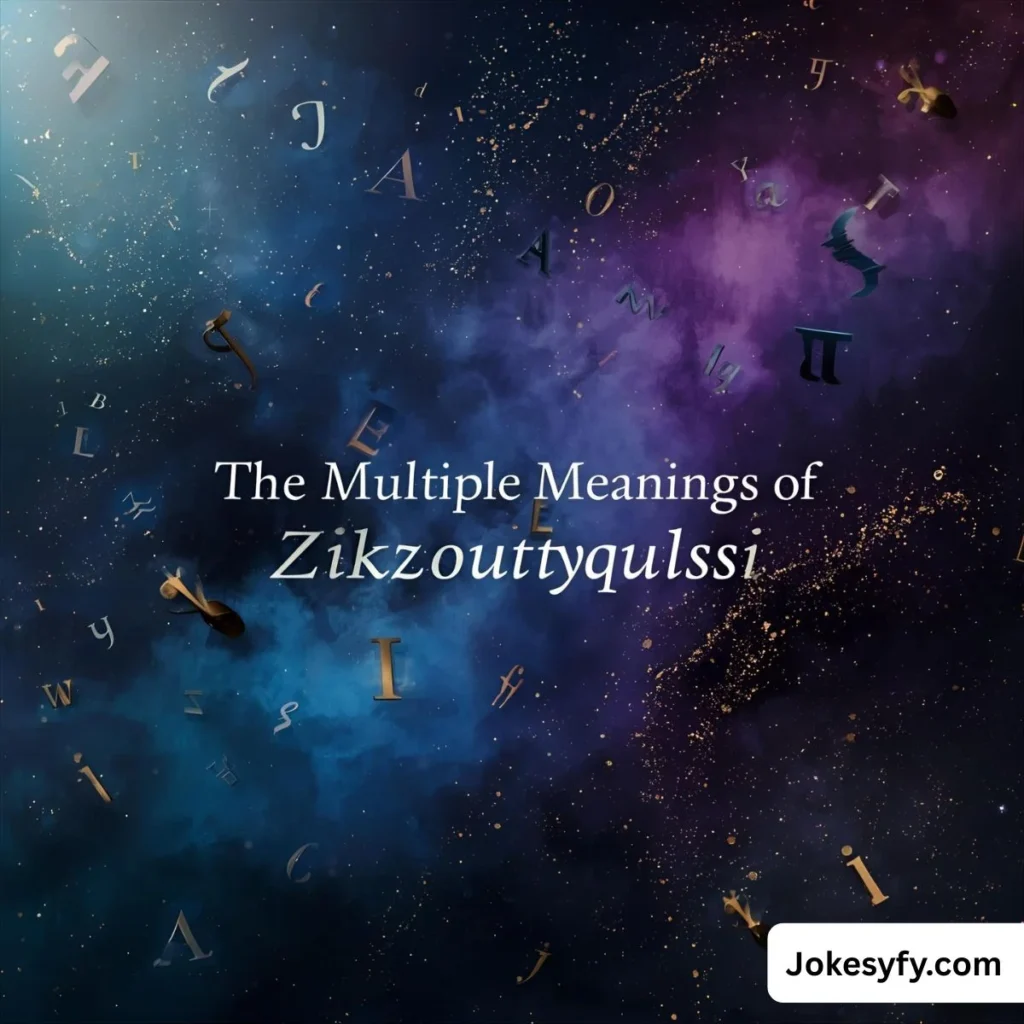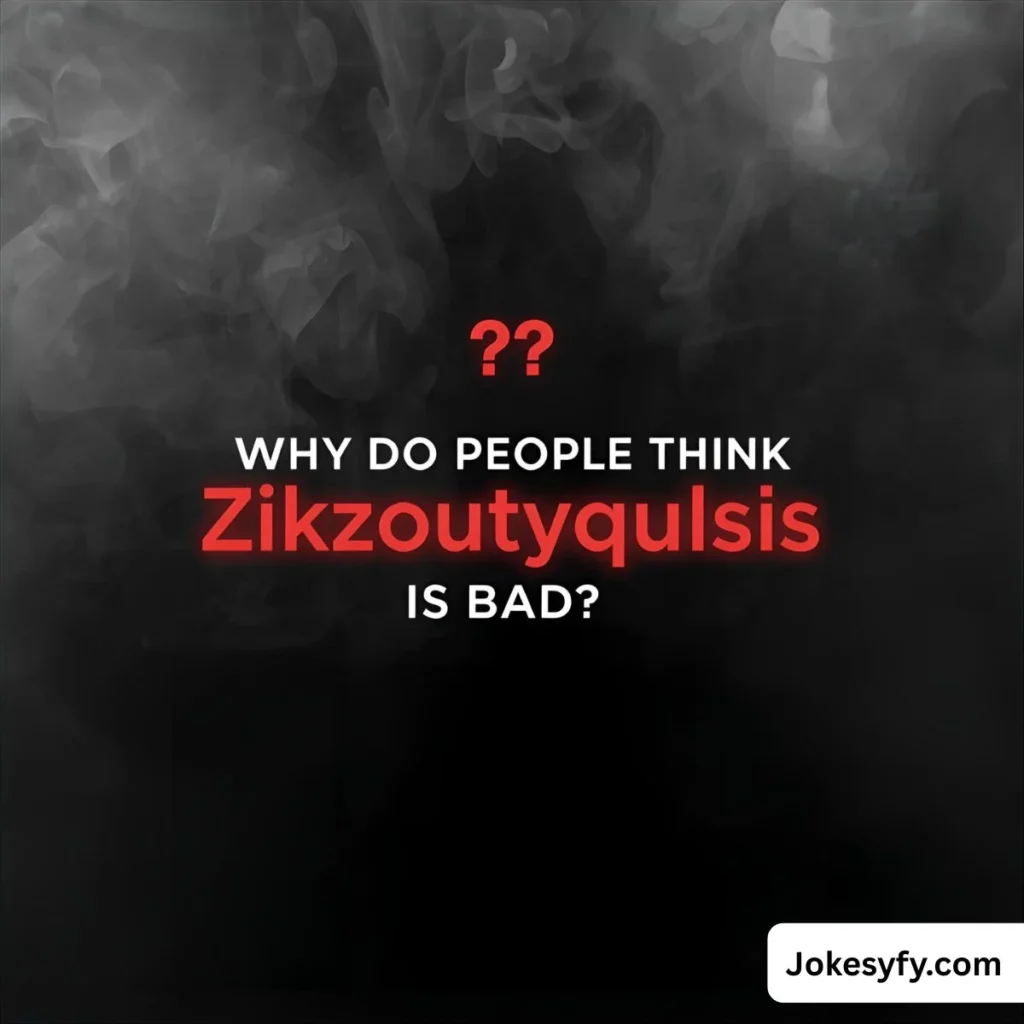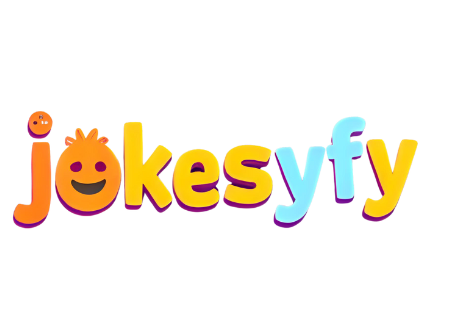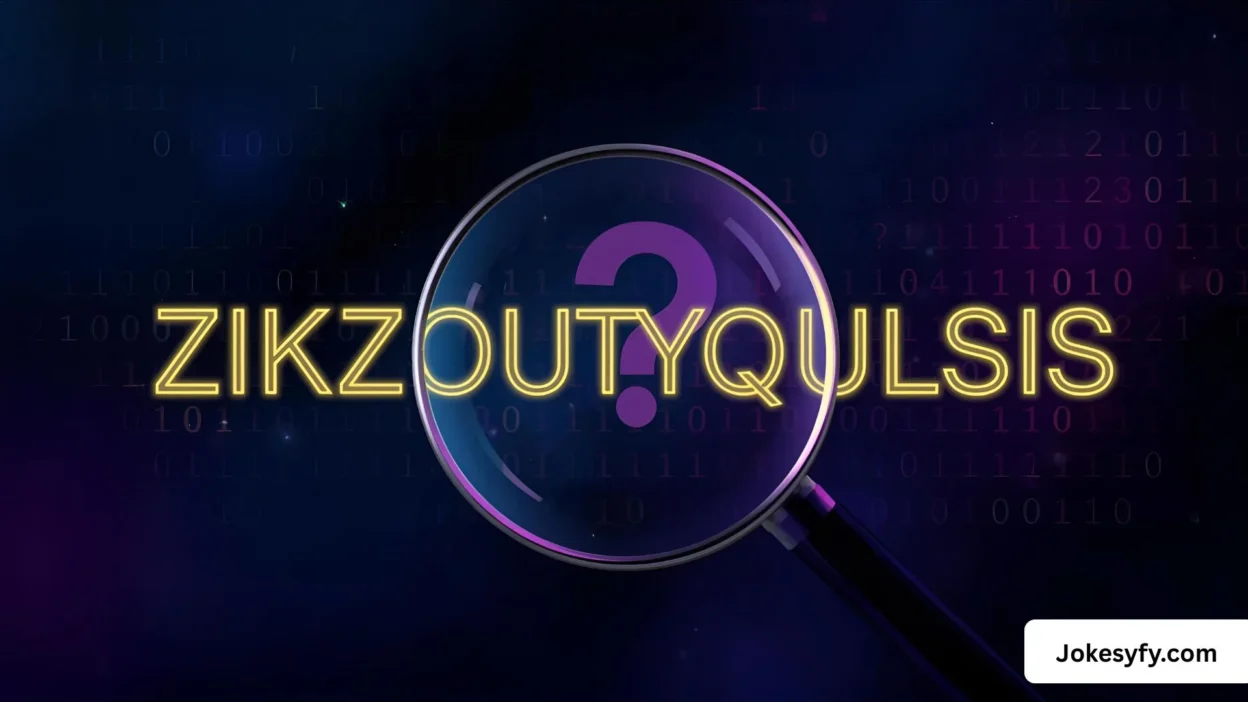Zikzoutyqulsis has emerged as one of the internet’s most puzzling viral phenomena, sparking curiosity, concern, and endless speculation across digital platforms. When people encounter this unusual term for the first time, they inevitably ask the same question: “Is Zikzoutyqulsis bad?” This comprehensive investigation separates factual evidence from digital folklore, examining why strange terms capture our collective imagination and how they develop reputations—often without any factual basis. Through careful analysis of the term’s origins, spread, and perceived dangers, you’ll gain digital literacy tools that extend far beyond this single mystery, empowering you to navigate future viral phenomena with critical thinking and healthy skepticism.
The mystery of Zikzoutyqulsis represents more than just a peculiar arrangement of letters—it exemplifies how digital culture operates in the age of social media amplification. As we dissect the evidence and consult expert perspectives, you’ll discover why human psychology gravitates toward mysterious concepts and how the internet’s structure accelerates both curiosity and misinformation. By article’s end, you’ll possess not just answers about this specific term, but a critical thinking framework for evaluating any viral mystery that crosses your screen.
What Exactly Is Zikzoutyqulsis? 🤔
Zikzoutyqulsis functions as a linguistic Rorschach test—an undefined term that reveals more about the observer than the concept itself. Without official definition or dictionary recognition, this mysterious phrase has become a blank canvas for digital projection, absorbing whatever meanings, fears, or jokes communities assign to it. The term’s very ambiguity has become its most powerful feature, enabling multiple interpretations to coexist across different online subcultures.
Across the digital landscape, Zikzoutyqulsis assumes various identities depending on context:
- Digital Placeholder: Similar to “lorem ipsum” in design circles, the term sometimes serves as nonsense filler content in online discussions and mock-ups, testing how people engage with unfamiliar concepts.
- Experimental Supplement Label: In niche wellness communities, the name has appeared alongside unverified products marketed as cognitive enhancers or productivity boosters, though without scientific validation.
- Social Experiment: Evidence suggests Zikzoutyqulsis may have originated as a deliberate test of digital spreadability—an experiment in how quickly invented terms can travel through online ecosystems.
- Cultural Mirror: Ultimately, the phenomenon reflects our collective relationship with the unknown in digital spaces, highlighting both our curiosity and apprehension toward concepts we don’t understand.
The Multiple Meanings of Zikzoutyqulsis

The interpretation of Zikzoutyqulsis varies dramatically depending on the observer’s perspective and the context of encounter. This variance in understanding has created parallel narratives about what the term represents and whether it carries positive, negative, or neutral connotations.
Interpretation Spectrum Table
| Interpretation Type | Common Beliefs | Reality Check |
|---|---|---|
| Symbolic Expression | Represents chaos, disorder, or confusion | Purely subjective, not based on factual meaning |
| Internet Slang | Meme-style filler word for humor | Widely accepted usage in certain communities |
| Negative Label | Shorthand for bad behavior or dangerous items | Contextual, not inherent to the term itself |
| Secret Code | Believed to hide hidden meanings or messages | No cryptographic evidence supports this |
| Nonsense Word | Simply invented for curiosity and engagement | Closest to verifiable truth |
The polarized perceptions of Zikzoutyqulsis demonstrate how digital contexts shape meaning. In conspiracy-oriented communities, the term might appear sinister, while in creative circles, it serves as inspiration for humorous content or artistic projects. This division highlights how our digital environments filter our understanding of ambiguous concepts.
The Origin Story: Where Did Zikzoutyqulsis Come From? 📈
Tracing the precise origins of Zikzoutyqulsis reveals a classic pattern of digital emergence, where obscure terms gain momentum through layered contributions across multiple platforms. While no single point of creation has been verified, the evolutionary path follows recognizable internet meme trajectories that explain how nonsense can transform into perceived significance.
Most digital culture researchers point to niche online communities as the likely breeding ground for Zikzoutyqulsis. These spaces often serve as laboratories for linguistic experimentation, where users coin unusual terms to test viral potential or establish insider knowledge. The term’s structural complexity suggests deliberate construction rather than organic development, possibly designed to spark exactly the curiosity it has generated.
Timeline of Viral Spread
The dissemination of Zikzoutyqulsis across digital platforms follows a predictable pattern observed with previous internet mysteries:
- Early Stage (Underground Origins): Initial appearances in specialized chatrooms and forums where users experiment with language and concept creation.
- Viral Phase (Speculation Spread): The term crosses into mainstream platforms through memes and curiosity-driven posts, prompting “What is this?” searches that accelerate its spread.
- Mythologizing Stage (Narrative Development): As search interest grows, competing explanations emerge ranging from harmless nonsense to sinister conspiracy theories.
- Current Stage (Meta-Analysis): Blogs, discussions, and debunking articles attempt to clarify the phenomenon, representing the natural maturation of digital mystery cycles.
This evolutionary path from obscurity to controversy mirrors previous internet phenomena, demonstrating predictable patterns in how digital culture processes and amplifies unfamiliar concepts regardless of their factual basis.
Why Do People Think Zikzoutyqulsis Is “Bad”? 🚫

The perception of Zikzoutyqulsis as potentially dangerous or negative stems from psychological predispositions and social dynamics that predate the internet itself, amplified by digital acceleration. Understanding these underlying mechanisms explains not only this specific case but countless similar episodes of digital moral panic.
Psychological Drivers of Suspicion
- Fear of the Unknown: Human cognition naturally questions unfamiliar concepts as potential threats, an evolutionary advantage that becomes counterproductive in digital environments filled with invented terms.
- Pattern Recognition Overdrive: Our brains excel at finding patterns, even where none exist—a phenomenon called apophenia—leading people to imagine connections between Zikzoutyqulsis and real-world concerns.
- Cultural Anxiety Projection: Broader societal concerns about technology, health, or social change often find expression through symbolic scapegoats, with mysterious terms like Zikzoutyqulsis becoming vessels for these projected fears.
- Authority Distrust: In an era of declining institutional trust, people increasingly question official narratives while simultaneously granting credibility to alternative explanations, regardless of their evidentiary basis.
Social Amplification Mechanisms
The digital ecosystem possesses built-in features that systematically amplify concerns about terms like Zikzoutyqulsis:
- Algorithmic Engagement: Social platforms prioritize content that generates strong reactions, creating incentive structures that favor alarming interpretations over neutral ones.
- Community Polarization: Online groups often strengthen internal bonds through shared opposition to perceived threats, making suspicious interpretations socially rewarding.
- Information Cascades: Once initial claims about Zikzoutyqulsis gained traction, subsequent users repeated assertions without verification, creating the illusion of consensus through repetition rather than evidence.
- Ambiguity Exploitation: The term’s undefined nature allows it to be flexibly reinterpreted to fit various preexisting concerns, from health anxieties to technological worries.
Fact-Checking Common Claims About Zikzoutyqulsis ✅
When separating verified information from speculation regarding Zikzoutyqulsis, a clear pattern emerges: claims far outpace evidence. This discrepancy between allegation and confirmation characterizes many digital mysteries and requires careful evaluation of available information.
Comprehensive Claim Assessment
| Claim | Evidence Status | Reality Check |
|---|---|---|
| “Zikzoutyqulsis is dangerous” | ❌ No supporting evidence | No verified incidents or studies confirm harm |
| “It’s a secret society code” | ❌ Conspiracy-driven | No organizational connections documented |
| “The term symbolizes chaos” | ⚠️ Metaphorical only | Subjective interpretation, not literal meaning |
| “It has an official definition” | ❌ Not recognized | No dictionary or academic recognition |
| “Products using the name are verified” | ❌ Unsubstantiated | No clinical trials or regulatory approval |
| “Governments have banned it” | ❌ False | No regulatory restrictions in any country |
The comprehensive absence of verification for alarming claims suggests that Zikzoutyqulsis functions primarily as a vessel for projection rather than representing substantiated concerns. This evidentiary void hasn’t prevented the term from generating significant digital engagement, highlighting how mystery often outweighs facts in viral contexts.
Health Claim Investigation
Some online discussions have attempted to link Zikzoutyqulsis to health concerns, particularly regarding supplements using the name. When examining these allegations:
- No clinical studies connect Zikzoutyqulsis to specific health conditions
- Anecdotal reports of side effects lack scientific controls or verification
- Regulatory agencies haven’t issued warnings about products using this name
- Medical literature contains no references to the term as a biological agent
The disparity between online health concerns and official medical recognition demonstrates how digital environments can generate perceived health risks disconnected from clinical reality.
Expert Insights: What Researchers Say 🧠
Academic and professional perspectives on phenomena like Zikzoutyqulsis provide valuable context for understanding why such terms capture attention and how they function within digital culture. These expert analyses help reframe the conversation from specific allegations to broader patterns of human-digital interaction.
Linguistic Perspectives
Language specialists approach Zikzoutyqulsis as a case study in digital etymology, noting how online environments have accelerated the creation and dissemination of invented terms. Linguists observe that:
- “Zikzoutyqulsis exemplifies constructed lexical innovation—a phenomenon where communities coin new terms specifically for their spreadability rather than communicative utility.”
- “The word’s structure suggests deliberate unusual construction designed to trigger curiosity and memorability through atypical letter combinations.”
- “Digital environments have dramatically compressed the traditional lifecycle of word adoption, allowing terms to move from creation to controversy in days rather than years.”
These insights help contextualize Zikzoutyqulsis within broader patterns of language evolution, particularly how digital communication transforms linguistic development.
Psychological Analysis
Cognitive and social psychologists recognize in Zikzoutyqulsis a familiar pattern of ambiguous stimulus interpretation, where people project existing concerns onto undefined concepts. Research indicates:
- “The human brain demonstrates low tolerance for ambiguity, rapidly generating explanations for unfamiliar concepts regardless of their accuracy.”
- “Digital communities provide social reinforcement for interpretations, rewarding users who develop compelling narratives about mysterious terms.”
- “The mysterious nature of terms like Zikzoutyqulsis triggers engagement through curiosity, creating built-in audiences for both creators and debunkers.”
These psychological mechanisms explain why Zikzoutyqulsis maintains attention despite the absence of factual controversy, highlighting how human cognition interacts with digital content.
Cultural Studies Approaches
Researchers examining digital culture identify Zikzoutyqulsis as an example of participatory mystery creation, where communities collectively develop narratives around ambiguous stimuli. Cultural analysts note:
- “The term functions as a collaborative canvas for meaning-making, with different groups developing competing interpretations that reflect their specific concerns and values.”
- “Mystery drives engagement in attention economies, creating incentives for both content creators and platforms to sustain rather than resolve ambiguities.”
- “The lifecycle of such terms follows predictable digital hype cycles—from obscurity to speculation to meta-commentary—that have become standardized within online culture.”
This perspective helps frame Zikzoutyqulsis not as an anomaly but as a representative example of how digital communities process and amplify ambiguous information.
Real-World Impact: How People Are Reacting 🌍

Despite its questionable factual basis, the Zikzoutyqulsis phenomenon has generated tangible responses across digital and physical spaces. These reactions demonstrate how even purely conceptual mysteries can produce measurable effects when amplified through contemporary media ecosystems.
Digital Community Responses
- Curiosity-Driven Investigations: Many users approach Zikzoutyqulsis with genuine curiosity, researching origins and potential meanings through search engines and community discussions.
- Satirical Engagement: Recognizing the absurdity of the situation, some communities have embraced the term humorously, creating memes, jokes, and parody explanations that mock the very concept of mysterious viral terms.
- Concern and Warning Sharing: A segment of internet users has interpreted the term through protective frameworks, sharing cautions and alerts about potential dangers despite the absence of evidence.
- Creative Appropriation: Artists, writers, and creators have adopted Zikzoutyqulsis as inspiration for projects, transforming the ambiguous term into music, visual art, and fictional world-building.
The diversity of responses highlights how digital cultures process ambiguous information through multiple parallel approaches, from caution to creativity.
Marketplace Reactions
The popularity of Zikzoutyqulsis has inevitably inspired commercial responses, demonstrating how digital mysteries can transition into economic opportunities:
- Speculative Products: Some entrepreneurs have launched products using the name, capitalizing on its search visibility and mysterious connotations to generate curiosity-driven purchases.
- Content Creation: YouTube, TikTok, and blog creators have produced explanatory content analyzing the phenomenon, generating revenue through advertising and sponsorship.
- Community Building: Certain groups have used discussion of the term as a social bonding mechanism, creating exclusive communities around shared interpretation.
These commercial developments illustrate how attention—regardless of its factual basis—can be monetized within digital economies, creating incentives to sustain rather than resolve mysteries.
Debunking Common Myths About Zikzoutyqulsis 🎯
Misinformation about Zikzoutyqulsis has proliferated through repetition rather than evidence. Correcting these misconceptions requires addressing both specific false claims and the underlying patterns that make such misinformation appealing.
Myth vs. Reality Analysis
- MYTH: Zikzoutyqulsis is scientifically proven to be dangerous
- REALITY: No scientific studies, clinical trials, or regulatory reports confirm any inherent danger. The claim originates from unverified anecdotes rather than empirical research.
- MYTH: The term has ancient origins or secret historical meaning
- REALITY: All available evidence points to recent digital creation. The term doesn’t appear in historical texts, archaeological records, or anthropological studies.
- MYTH: Products using this name have special properties
- REALITY: Supplements or products using the name lack unique verified effects. Any perceived benefits likely stem from placebo responses rather than distinctive qualities.
- MYTH: Understanding Zikzoutyqulsis requires special knowledge
- REALITY: The term doesn’t contain hidden complexity—its significance lies entirely in how people interpret it, not in concealed meanings.
The persistence of these myths despite contradictory evidence demonstrates the powerful role of narrative appeal in sustaining digital misinformation, particularly when facts prove less compelling than mysterious explanations.
Psychological Roots of Myth Persistence
Why do these myths continue circulating despite the absence of supporting evidence? Several psychological factors contribute to their durability:
- Cognitive Closure: The human preference for definite answers—even incorrect ones—over persistent uncertainty makes mysterious explanations appealing despite their inaccuracy.
- Confirmation Bias: Once people develop beliefs about Zikzoutyqulsis, they preferentially notice supporting information while disregarding contradictory evidence.
- Social Affiliation: Sharing mysterious interpretations can provide community belonging that outweighs factual accuracy as a personal motivation.
- Narrative Appeal: Compelling stories about secret dangers or hidden knowledge often feel more satisfying than mundane explanations, regardless of their truth value.
Understanding these psychological underpinnings helps explain why myth-debunking requires more than just presenting facts—it necessitates addressing the underlying emotional and social needs that myths fulfill.
Practical Guidance: How to Evaluate Viral Mysteries 🔧
The Zikzoutyqulsis phenomenon provides an excellent case study for developing critical evaluation skills applicable to future viral mysteries. By applying structured assessment techniques, you can navigate digital ambiguities with greater confidence and discernment.
Critical Assessment Framework
When encountering unfamiliar terms or concepts gaining traction online:
- Verify Source Credibility: Investigate whether claims originate from established institutions with verification processes or from unaccountable sources making sensational assertions.
- Check for Corroboration: Determine whether multiple independent sources confirm information or if the same unverified claims simply recirculate through content networks.
- Examine Evidence Quality: Assess whether assertions reference verifiable data, controlled studies, and documented incidents or rely exclusively on anecdotes and speculation.
- Consider Alternative Explanations: Explore whether simpler interpretations adequately explain the phenomenon without requiring mysterious or conspiratorial elements.
- Evaluate Motivational Factors: Analyze what psychological or social needs might be driving engagement with the concept, including curiosity, community bonding, or anxiety projection.
Applying this structured approach to Zikzoutyqulsis and similar phenomena provides protection against unnecessary concern while fostering more sophisticated digital literacy.
Digital Literacy Practices
Beyond specific evaluation techniques, developing general digital literacy habits improves navigation of ambiguous online content:
- Practice Source Tracing: Follow claims to their original context rather than relying on secondary interpretations, noting how information transforms through repetition.
- Cultivate Tolerance for Ambiguity: Develop comfort with unresolved questions rather than prematurely accepting satisfying but unverified explanations.
- Diversify Information Sources: Intentionally consult perspectives from different contexts to avoid echo chamber effects that amplify specific interpretations.
- Monitor Emotional Responses: Notice when content triggers strong emotional reactions, as this often indicates effective narrative construction rather than factual significance.
These practices build resilience against digital misinformation while enhancing ability to participate meaningfully in online conversations about emerging phenomena.
Final Verdict: Is Zikzoutyqulsis Actually Bad? ⚖️
Based on comprehensive examination of available evidence, expert perspectives, and documented impacts, Zikzoutyqulsis itself poses no verified danger. The term functions primarily as a digital Rorschach test—an ambiguous stimulus that reveals more about observers and their contexts than about any inherent qualities. The perception of “badness” stems predominantly from psychological predispositions and social amplification rather than demonstrated harm.
The greater significance of the Zikzoutyqulsis phenomenon lies in what it reveals about contemporary information processing. Digital environments excel at accelerating engagement but often lack effective verification mechanisms, creating conditions where mysteries can generate substantial attention despite minimal factual basis. This disconnect between engagement and evidence characterizes many aspects of modern digital culture.
When considering how to approach Zikzoutyqulsis specifically:
- The term itself carries no inherent meaning or danger—it exists as a linguistic construction without verified connection to harmful substances, organizations, or activities.
- Products using the name should be evaluated normally—with appropriate skepticism toward unverified claims—but this caution applies to all poorly documented products, not specifically those using this term.
- The social dynamics surrounding the term provide valuable insight into how digital communities process ambiguity, offering learning opportunities for improved critical thinking.
The most accurate perspective recognizes Zikzoutyqulsis as a case study in digital culture rather than as a legitimate source of concern. The real value lies not in solving its mystery but in understanding why such mysteries capture attention and how they travel through online ecosystems.
Frequently Asked Questions About Zikzoutyqulsis ❓
What does Zikzoutyqulsis mean?
Zikzoutyqulsis has no fixed or verified meaning. The term functions as a digital blank canvas that different communities interpret according to their interests, concerns, and creative impulses. Without official definition, its significance remains entirely in the eye of the beholder.
Is Zikzoutyqulsis harmful or dangerous?
No verified evidence suggests Zikzoutyqulsis is inherently harmful. The term itself is a linguistic construction without demonstrated connection to dangerous substances, activities, or organizations. Some products using the name may warrant normal consumer caution, but this applies to any poorly documented product regardless of name.
Where did Zikzoutyqulsis come from?
The most likely origin points to online communities experimenting with language creation and viral spread. The term appears to have emerged from digital spaces where users test how invented concepts travel across platforms, following patterns observed with previous internet phenomena.
Why do people think Zikzoutyqulsis is bad?
This perception stems primarily from psychological tendencies to view unfamiliar concepts as potential threats, amplified by social media dynamics that reward engaging content regardless of its factual basis. The term’s unusual structure triggers curiosity that sometimes manifests as suspicion.
Is Zikzoutyqulsis an official word?
No, Zikzoutyqulsis lacks recognition in standard dictionaries or academic linguistic resources. The term exists primarily within digital subcultures and hasn’t achieved formal language institution acceptance.
Can I use Zikzoutyqulsis in conversation?
You can use the term, but expect confusion or curiosity from listeners unfamiliar with the digital context. Since it carries no standard meaning, you would need to provide explanation, making it generally impractical for conventional communication.
Will Zikzoutyqulsis remain popular?
Like most viral terms, Zikzoutyqulsis will likely follow the typical lifecycle of digital phenomena—initial curiosity peak followed by gradual decline as attention shifts to new mysteries. Its lasting impact may be as a reference point for understanding how digital cultures process ambiguity.
Conclusion: Beyond the Mystery 🎭
The journey through the Zikzoutyqulsis phenomenon reveals less about a specific term than about our digital information ecosystems and how we navigate them. This mysterious arrangement of letters has served as a mirror reflecting our psychological predispositions, social dynamics, and information processing habits in the digital age. The true significance lies not in solving its mystery but in understanding why we find such mysteries compelling.
As digital environments continue evolving, phenomena like Zikzoutyqulsis will inevitably recur—new terms, concepts, and claims will capture temporary attention, generating engagement through ambiguity and speculation. Developing critical navigation skills for this landscape proves more valuable than resolving any single mystery. The tools for source evaluation, evidence assessment, and psychological self-awareness provide lasting benefits beyond any viral trend.
Zikzoutyqulsis ultimately teaches that in an attention-driven digital economy, mystery often outweighs facts in engagement value. Recognizing this fundamental dynamic allows for more deliberate participation in digital spaces—appreciating creativity and social connection while maintaining evidentiary standards. The term itself may fade from relevance, but the lessons from its trajectory remain persistently valuable for navigating our increasingly complex information environment.

I am Charles K Baxter, a humor enthusiast passionate about spreading joy and positivity through laughter.




